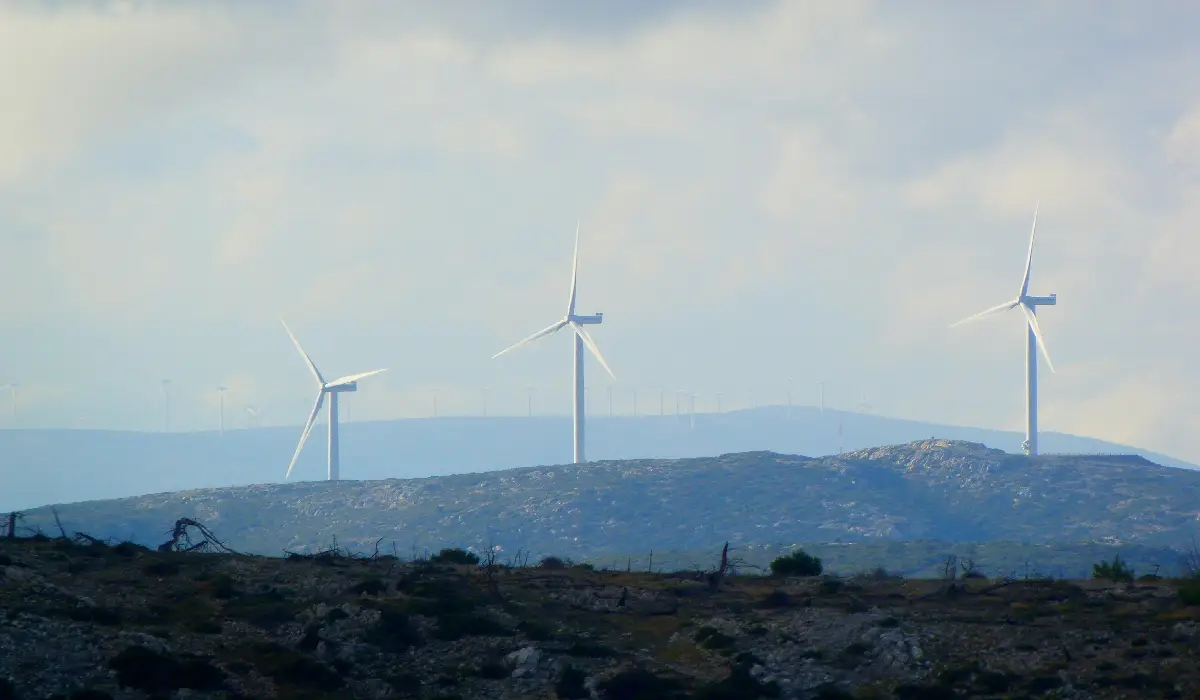An economy, that intends to achieve sustainable development without degrading the environment and also participates in the reduction of environmental risks and ecological scarcity, is known as Green Economy.
The world economy is slowly, and unevenly, coming out of the worst crisis most of us have ever known. While dealing with immediate problems such as high unemployment, poverty we have to look to the future and devise new ways of ensuring that the growth and progress we have come to take for granted are assured in the years to come.
In June 2009, Ministers from 34 countries signed a Green Growth Declaration, declaring that they will: “Strengthen their efforts to pursue green growth strategies as part of their responses to the crisis and beyond, acknowledging that green and growth can go hand-in-hand.”
What is green growth?
Green growth is fostering economic growth and development, while ensuring that natural assets continue to provide the resources and environmental services on which our well-being relies.
We need green growth because risks to development are rising as growth continues to erode natural capital. If left unchecked, this would mean increased water scarcity, worsening resource bottlenecks, greater pollution, climate change, and unrecoverable biodiversity loss.
33% of the world’s population could be affected by water scarcity by 2025. We already have started buying bottled water for our daily needs.
10%, the amount of biodiversity lost by 2030 without action to stem the tide.
Long Story Short
Green growth can open up new sources of growth through:
- Productivity. Incentives for greater efficiency in the use of resources and natural assets, including enhancing productivity, reducing waste and energy consumption, and making resources available to their highest value use.
- Innovation. Opportunities for innovation, spurred by policies and framework conditions that allow for new ways of creating value and addressing environmental problems.
- New markets. Creation of new markets by stimulating demand for green technologies, goods, and services; creating new job opportunities.
- Confidence. Boosting investor confidence through greater predictability and continuity around how governments deal with major environmental issues.
- Stability. More balanced macroeconomic conditions, reduced resource price volatility and supporting fiscal consolidation through, for instance, reviewing the composition and efficiency of public spending, and increasing revenues through putting a price on pollution.
Green growth will also reduce the risks to growth from:
- Bottlenecks that arise when resource scarcity or reduced quality makes investment costlier, such as the need for capital-intensive infrastructure when water supplies become scarce or water quality decreases. In this regard, the loss of natural capital can exceed the gains generated by economic activity, undermining the ability to sustain future growth.
- Imbalances in natural systems raise the risk of abrupt, highly damaging – and potentially irreversible – effects. Attempts to identify potential thresholds suggest that some – climate change, global nitrogen cycles, and biodiversity loss – have already been exceeded.
Green growth initiatives
UK: The Bank was launched in 2012, with GBP 3 billion of public money to provide funding for low-carbon projects that would be too risky or whose returns are too long-term for the market to invest in.
GERMANY: The National Strategy for Sustainable Development (2002) defined targets for 21 different sectors. In 2010 nearly 17% of the electricity supply was generated from renewable sources, surpassing the target value of 12.5%.
DENMARK: Denmark’s Agreement on Green Growth (2009) combines a high level of environmental, nature, and climate protection with modern and competitive agriculture and food industries.
RWANDA: Rwanda’s initiative to preserve the mountain gorilla’s habitat has boosted tourism, which now accounts for the biggest share of national GDP.
The job creation potential of investing in green activities will create many jobs, and a number of governments have already stressed the sizeable job creation potential of some of their green stimulus packages and broader green growth strategies. Beyond the short-run macro stabilization packages, there is a large potential for job creation associated with the expansion of renewable energies.
There is a widespread perception that some people will be worse off because of green growth policies. While this is not the case, unless these concerns are addressed, some key policies may be called into question. Any negative impacts on poorer households need to be offset through well-targeted programs, taking account of settings across the entire tax and transfer system.
India’s Green Economy Policies
Coal: Coal will remain the major source of energy until 2030. Thermal plants that use coal also need to undergo massive technological changes if they are to remain sustainable. Technological change will need regulatory interventions since the capital costs of setting up plants with up-to-date technologies are far higher as compared to subcritical plants. Renovation and modernization measures need a major boost. Research and Development (R&D) for clean coal technology needs a time-bound roadmap.
Oil & Gas: For this sector, disclosure of energy usage and process-related carbon emissions should be encouraged, to start with voluntary and progressively to be made mandatory. This would lead to greater clarity and public awareness, which can further facilitate policy action in the future. Exploration and production contracts should include incentives for energy saving in operations; fiscal arrangements in the form of tax incentives can encourage the reduction of associated gas flaring. In the midstream oil and gas segment, a roadmap that plans an integrated fuel transport policy must be created. In the refining segment, Solomon Energy Efficiency Index can be applied as a measuring standard that would help policymakers set reasonable energy use reduction goals in the medium and long run. To begin with, reporting efficiency according to the guidelines of such an index may be promoted. On the consumption side, a Green Gas Quadrilateral must be created by setting up natural gas pumps along the Golden Quadrilateral highways in order to promote the use of gas as a transport fuel.
Renewables: India targets an installed RE capacity of 175 GW by 2022, of which 100 GW will come from solar power, 60 GW from wind energy, 10 GW from small hydropower, and 5 GW from biomass-based power projects. Renewable energy forecasting is required for grid security. However, due to a lack of quality data and insufficiently developed forecasting tools, accurate RE forecasting is difficult. A significant amount of generation integration will depend on the accuracy of the forecast. To achieve low-cost manufacturing and therefore lower capital costs and to capitalize on its inherent advantages in the solar sector, India needs to strengthen and upgrading its solar R&D and manufacturing capabilities.
Transmission Grid: Inadequate grid infrastructure is a key issue that needs to be addressed urgently. Across most of the states with significant RE potential, the grid does not have sufficient spare capacity to be able to evacuate the increasing quantum of RE electricity. A comprehensive program to introduce a smart grid will realize lots of benefits including better forecasting of demand and supply through centralized as well as decentralized power sources (renewables) with better grid stability. Public-Private Partnership (PPP) and engineering, procurement, and construction models can boost infrastructural development.
Power Distribution: Since the financial viability of the power sector as a whole depends on the revenues collected at the distribution end, it is vital that the distribution system is made financially viable. This can be made possible by improving the operational performance by achieving 100% metering to achieve 100% billing/collection efficiency and to reduce the commercial losses.
Nuclear: Financial, administrative, and, most importantly, statutory independence is absolutely essential for the power regulator, which can be achieved by the ‘Nuclear Safety Regulatory Authority Act’ draft legislation that was tabled in the Parliament in September 2011. A public communications strategy that involves local and regional people, local businesses, and organizations in the decision-making process is essential. There are good examples of public engagement best practices and strategies followed in different countries. For instance, Finland follows a pre-defined timetable based on a step-wise decision-making process for establishing a nuclear power plant.
Hydropower: On the national level, the hydropower sector is governed by the National Hydropower Policy of 2008. Various state governments have put in place such policies like the Hydro Power Policy, 2006 of Himachal Pradesh; Policy for Harnessing Renewable Sources in Uttarakhand with Private Sector/Community Participation, 2008; the Hydro-Electric Power Policy of Arunachal Pradesh; among others. These policies have framed laws that govern land acquisition, law and order, impact on the environment via environmental impact assessments, and impact on the people via social impact assessments. It is important to look at measures to iron out the issues in the current policy framework. Creating policy and institutional mechanisms to favor alternative designs to increase dam life as also to reduce the divergence, the designed and actual dam life must be taken into account.
Transport: Greening of the transport sector in India would seek a holistic strategy that involves planned interventions in order to make a decisive shift to green transport, interventions, and massive investments are required in the coming decades in the form of modal shifts actions, specific infrastructure development and up-gradation works, fuel and system efficiency improvements, and mobility management. An integrated data management system and centre for regular monitoring of transport data can be set up. The spatial arrangement of the various land uses or activities across the city is a very important factor in determining the intra-city travel demand. Therefore, any efforts towards integrated land-use and transport planning can significantly help in reducing the need to travel and lead to a reduction in associated costs. Upgradation in terms of fuel quality and fuel efficiency can promote cleaner fuel by reducing sulphur content and can lead to a significant reduction in emissions.
Electric Mobility: Electric vehicles as a green growth intervention yield multiple co-benefits, including energy security, job creation (through technology innovation and local manufacturing), and reduced local air pollution. The government of India recently announced the Faster Adoption and Manufacture of Electric Vehicles in India Scheme, which is a step in the right direction. However, in order to accelerate the uptake of this green technology, it is recommended that the scheme be further augmented with substantial additional funding and provisions made for granting 100% capital subsidy to state governments that are keen to adopt electric buses in public transportation.
Financing: Financing models for green energy need to be customized to the specific financing needs of technologies in different stages of innovation. Public finance through the government and low-cost finance from bilateral/multilateral agencies has a crucial role in supporting R&D and innovation of new technological solutions that are in the pre-commercial stage currently. Bank finance is important for developing the market for commercially available technologies.
Buildings: New stock needs to be built on the principles of green buildings to accrue social, 19 environmental, and economic benefits. Retrofit measures to make the existing building stock energy-efficient and water-efficient need to be undertaken. There is a need to ensure all new construction for commercial buildings (as defined by the Energy Conservation Building Code—ECBC) to be ECBC compliant. The Greening of rooftops and public spaces in all urban areas to prevent the urban heat island effect can be explored. Alternate building materials that perform equal or better than the conventional ones should be encouraged to bring in environmental sustainability.
Agriculture: Technical options for improving energy efficiency in irrigation include facilitating up-gradation of inefficient pump sets to energy-efficient pump sets through the AgDSM program that seeks to establish viable models for PPP. Promotion and effective adoption of solar pumping systems are necessary as it could facilitate a reduction in diesel consumption in irrigation and therefore savings of non-renewable fossil fuel.
Clean Fuel: Considering the fast growth in the vehicular sector, more stringent steps should be taken. Instead of following chronological order for the norms, BS-V fuels should be considered by enabling the Indian refineries to leapfrog from BS-II to BS-V and BS-VI. Old vehicles should be gradually phased out with a proper scrapping mechanism in place. There is a need for enhanced and faster penetration of cleaner fuels like LPG. There is also a need for increased penetration of improved biomass-based chullahs with higher efficiencies and lower emissions.
Air Quality: The installment of air pollution control equipment (APCE) should be made mandatory for all industries. The efficiency of installed APCE’s should be checked at regular levels. Electrostatic precipitators are installed in power plants but inspection and maintenance systems should be enforced at regular time intervals by the government. The recently announced National Air Quality Index, which considers eight pollutants (PM10, PM2.5, NO2, SO2, CO, O3, NH3, and Pb), could be expanded to more cities for better monitoring of air quality in these emerging economic centers.
Water: Integrated water resource management needs to be explored for water conservation using rainwater harvesting and groundwater recharge as well as rejuvenation of lakes and ponds in the river basin catchment. Water use efficiency can be enhanced in irrigated agriculture by increasing the output per unit of water, reducing loss of water to unusable sinks, reducing water degradation, and reallocating water to higher priority uses. Developing water quality database and management using real-time monitoring, linking billing with water supply network designs using Supervisory Control and Data Acquisition, and cloud computing systems. Institutional capacity building is of utmost importance in order to ensure that the mechanism of the overall framework ensures efficiency in treating water as a finite but renewable resource to be carefully managed and judiciously utilized.
Forests: Linkages need to be established between research institutions, state forest departments, and the private sector to produce good quality planting material. As envisaged in the Twelfth Five Year Plan model, nurseries can be established in selected forest divisions. Joint Forest Management institutions need to be strengthened through establishing strong linkages with gram panchayats and allocation of green funds. Village-level green volunteers can be trained for the conservation of natural resources. Claims to individual and community rights should be completed. Livelihoods of the right holders should be strengthened through training them in modern agriculture, animal husbandry, and forest management.
Bio-diversity: It is important to dovetail the national efforts for biodiversity conservation with the international goals and processes such as Aichi Biodiversity Target and Nagoya Protocol. The national targets are cross-cutting in terms of issues as well as respective jurisdictions of ministries of central government and state governments. However, there is a limitation in terms of funds available for achieving the national targets for biodiversity conservation.
Waste: Instead of following the usual end-of-pipe approach, waste management must be looked at holistically and preference must be given to the reduction of waste at the source. There should be efforts to institutionalize the informal sector and modernize recycling technologies. Informal waste recyclers 20 can be trained to collect the waste from households, do decentralized waste processing (composting or biogas), and trade recyclable waste. The current mechanisms to raise funds for waste management must be improvised. Spending on segments—other than a collection—of the waste management chain such as appropriate treatment, recovery, and disposal technologies and facilities is generally rather low. Increased investment in basic collection services, the transport of waste, and cleaning up dumpsites is a starting point for greening the sector. Investment can be targeted, for example, at techniques such as route optimization and transfer stations, which can bring down the capital and operational costs of providing waste services. Economic incentives and disincentives serve to motivate consumers and businesses to reduce waste generation and dispose of waste responsibly, thereby contributing to increased demand for greening the waste sector.
Irrigation: Promotion of micro-irrigation systems amongst farmers and in command areas will have significant implications on agricultural energy demand. Appropriate encouragement, incentives, and subsidies for farmers to adopt these systems are necessary, along with awareness and training on the deployment and use of these systems.
“Green economy is simply the efficient use of natural resources, prioritization of renewable sources, internalization of social and environmental costs, life-cycle analysis and aiming at being zero carbon and zero waste.“
References
- Indian Network for Climate Change Assessment (INCCA). 2010. Climate change and India. Government of India. Kothawale, D. R., A. A. Munot, K. Krishna Kumar. 2010. Surface air temperature variability over India during 1901-2007, and its association with ENSO.
- Climate Research International Green Growth Dialogue (IGGD)


